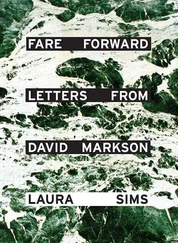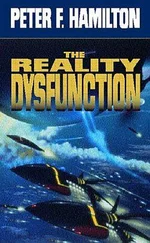David Palmer - Emergence
Здесь есть возможность читать онлайн «David Palmer - Emergence» весь текст электронной книги совершенно бесплатно (целиком полную версию без сокращений). В некоторых случаях можно слушать аудио, скачать через торрент в формате fb2 и присутствует краткое содержание. Год выпуска: 1984, ISBN: 1984, Издательство: Bantam Spectra, Жанр: Фантастика и фэнтези, на английском языке. Описание произведения, (предисловие) а так же отзывы посетителей доступны на портале библиотеки ЛибКат.
- Название:Emergence
- Автор:
- Издательство:Bantam Spectra
- Жанр:
- Год:1984
- ISBN:0-553-25519-3
- Рейтинг книги:3 / 5. Голосов: 1
-
Избранное:Добавить в избранное
- Отзывы:
-
Ваша оценка:
- 60
- 1
- 2
- 3
- 4
- 5
Emergence: краткое содержание, описание и аннотация
Предлагаем к чтению аннотацию, описание, краткое содержание или предисловие (зависит от того, что написал сам автор книги «Emergence»). Если вы не нашли необходимую информацию о книге — напишите в комментариях, мы постараемся отыскать её.
Won Compton Crook Award in 1985.
Nominated for Nebula Award for Best Novel in 1984.
Nominated for Hugo Award for Best Novel in 1985.
Finalist of Philip K. Dick Award in 1984.
Nominated for Locus Award for best first novel and best SF Novel in 1985.
Emergence — читать онлайн бесплатно полную книгу (весь текст) целиком
Ниже представлен текст книги, разбитый по страницам. Система сохранения места последней прочитанной страницы, позволяет с удобством читать онлайн бесплатно книгу «Emergence», без необходимости каждый раз заново искать на чём Вы остановились. Поставьте закладку, и сможете в любой момент перейти на страницу, на которой закончили чтение.
Интервал:
Закладка:
Every instinct shrieked “Madness!” Took every ounce of willpower to force hands to operate controls.
MMUs powered by compressed nitrogen; charge sufficient to impart roughly 66-feet-per-second total velocity change to normal-sized astronaut before poohing out. That translates to accelerating to about 45 miles an hour. Once. Or boosting to 22 miles an hour, then stopping. Also once. Own mass slightly more than one-third that of normal astronaut. However, extra gear probably more than made up difference.
Aligned thrust axis with right hand, applied power with left. Drifted toward rear, between wing, vertical stabilizer.
Looked around as cleared ship’s stern. And froze, transfixed. Not even mortal anxiety over impending intraorbital transit, consequences of failure, could prevent first unimpaired sight of Earth, heavens, from filling spirit with awe, joy, reverence. Much of planet dark from this perspective; but suddenly realized was at imminent risk of going blind again due to thickening lens of tears forming over eyes — with no means of wiping them away inside EMU.
Which reminded me: Not out there to enjoy sights — life of every hominem on pearlescent bowling ball dependent on me. Had no business wasting time rubbernecking; had work to do.
Blinked eyes furiously; shook head to clear vision. Twisted MMU’s tail.
Consumed about half fuel load during initial retrosquirt. Then coasted five minutes, watching Hale slowly dwindle. Inexpressibly relieved to note gradual shift in apparent attitude: Had left shuttle’s RCS attitude control on automatic; apparently really was dropping into faster orbit.
Reversed thrust at end of five minutes; used up balance of fuel on circularization (I hoped!) maneuver. Released MMU, pushed gently away. Untangled second from bundle, latched into place, rested hands on controls.
Then waited.
Waited while Hale’s aspect changed from distant rear view to more distant belly view to even more distant nose view, steadily foreshortening in ever more remote distance.
Tried to estimate speed from changing relationship between self, shuttle; couldn’t. So played with numbers in head: If relative velocity 15 miles per hour faster than shuttle/bomb train overhead, could expect to cover distance in something like 15-20 minutes. Wished had had better idea how far below original orbit was riding, but couldn’t tell that either. Estimating astronomical distances freehand slippery business.
Meanwhile, scanned heavens intently for dark spot that would indicate bomb’s location. Could still make out Hale well enough to use as pointer; knew where target supposed to be — but couldn’t find it.
Tried binoculars without success: Eyepieces’ distance from eyes hindrance but not major problem; merely reduced field of view; worked fine otherwise.
But couldn’t identify bomb.
Then had inspiration: Looked back at Hale; tried to get handle on distance by comparing relative size of shuttle with bomb as seen through binoculars from shuttle.
By that yardstick, seemed should be closing in on target. Decided had no choice but to act on assumption; add back delta-V, see if Gods Smiled.
About to implement when struck by doubt: Total package now massed less by one MMU. Wondered what effect reduction might have on response to thrust. Then realized would have opportunity to compensate with circularization shot, assuming bomb somewhere in vicinity. Deferred worry until then.
Looked back at Hale through binoculars, lined up thrust axis with direction of travel, consumed half fuel reserve in replacing delta-V.
Then waited again, looking desperately where bomb ought to be. And still wasn’t.
Getting really, no-foolin’ worried by this time. Orbital juggling performed as Harris taught me; bomb should have been in sight.
Waited another five minutes; circularized orbit again, using all but last whiff of nitrogen. Then looked around with earnestness not unmixed with, distinct from, panic…
And there it was (I’ll be damned!) no more than couple hundred yards away!
Resumed breathing.
And, in retrospect, diagnosed problem: Vehicle dead black, nonreflective; visible only through occultation under best of conditions. Spot over which hung on Earth’s equator approaching sunrise line; bomb almost between me, Sol; background glare obscured.
Then took first good look at bomb: huge thing — carbon copy of Hale; lacked only cockpit, cargo bay doors, etc. But where shuttle essentially friendly looking, bomb not (visceral reaction; don’t ask why). Harris correct: ominous-looking beast. Hung in void looking like modern Charon’s ferry.
Used up last puff of nitrogen from current MMU; kicked loose, mounted third. Lined up thrust axis on bomb, used five percent of remaining reaction mass accelerating. Two-mile-per-hour approach speed ample: Still two and a half hours to bomb’s departure; no point losing head, rushing. Would feel foolish during final seconds if, when so close to success, lost head, hurried; built up too much speed, split helmet on hull.
Braked to relative stop only yards from nose. Then realized hadn’t faintest idea where on monster access hatch actually located — training involved only cutaway sectional mock-up; drawings studied encompassed only specifics of own job. Engineering logic suggested had to be somewhere near bow, of course. Just matter of jetting around, finding it.
But now learned how limited MMU skills really were. Operation heretofore limited to straight-line thrusting; examining bomb carrier involved full range of maneuvering operations: yaw, pitch, twist, start, stop — and damned thing insisted on doing what I told it to do instead of what I wanted it to do. Frustrating in extreme.
Finally managed to stabilize self. Checked MMU status: about 50 percent gone; mostly wasted curing pilot-induced tumbling. Transferred to final MMU, left equipment bundle parked against what would be belly on Hale; set out to reconnoiter solo — maneuvering much more easily.
Drifted gently back along starboard side to wing’s leading edge without encountering hatch. Checked motion; moved toward topsides, headed back toward nose. Still nothing.
Eventually found hatch almost exactly where Hale’s crew hatch located: short distance up from belly, back from nose on portside.
Returned for equipment; maneuvered cautiously, with only occasional miscue, back to hatch.
Studied locking mechanism. Appeared similar to that on drawings, mock-up. Operation proved identical.
But not easiest gismo to operate under weightless conditions: Breathing pretty hard, faceplate partially fogged, by time got it open.
Parked MMU; secured with wire tie to latch handle. Drew self, equipment in through opening. Switched on flashlight.
Looking around produced sense of déjà vu: What could see of interior corresponded perfectly to training aids.
Headed for inner shell access hatch. Wriggled amongst, between structural pieces without difficulty (one aspect of task made easier by zero gee). Located, unlatched, swung open.
Wedged toolbox in convenient angle between trusses adjacent to hatch. Unstrapped PLSS from back, squirmed through 9-by-14-inch opening, trailing life-support lines.
Drew PLSS close to hatch; pulled entire coil of life-support lines through with me. Reached back, retrieved toolbox.
Maneuvered through complex of structural members to detonator, carefully paying out lines en route, watching for, avoiding, tendency to kink.
Studied exterior components; verified everything as represented on drawings, mock-up. Opened toolbox, set to work.
Actual warhead defusing anticlimactic. After week of intensive training amidst ever-mounting tension, operation proved simplicity itself: Snipped wires in correct order, undid four bolts, removed one plate; planted feet on bulkhead on either side of detonator, gripped shaft firmly; triggered hysterical strength, pulled, twisted, pulled again. Ta-dah.
Читать дальшеИнтервал:
Закладка:
Похожие книги на «Emergence»
Представляем Вашему вниманию похожие книги на «Emergence» списком для выбора. Мы отобрали схожую по названию и смыслу литературу в надежде предоставить читателям больше вариантов отыскать новые, интересные, ещё непрочитанные произведения.
Обсуждение, отзывы о книге «Emergence» и просто собственные мнения читателей. Оставьте ваши комментарии, напишите, что Вы думаете о произведении, его смысле или главных героях. Укажите что конкретно понравилось, а что нет, и почему Вы так считаете.












